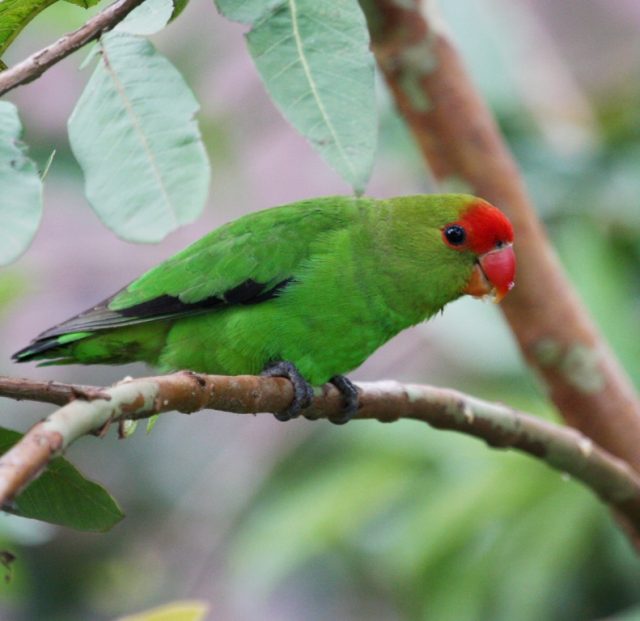Type the name of the breed you're looking for below
[wpdreams_ajaxsearchlite] Don't see the breed your're looking for? Click here and let us know!
Abyssinian Lovebird
| Origin | They are native to Eritrea and Ethiopia. Also known as the Black Winged Lovebird. |
| Size | Can grow up to 6.25 in(16 cm) |
| Lifespan | Can live up to 12 years |
| Noise | High. Talkative birds. |
| Characteristics | It is sexually dimorphic. The dimorphism becomes apparent in juvenile birds after their first molt at about eight or nine months of age. Both the male and female are mostly green, and only the adult male has a red forehead and a ring of red feathers around its eyes. The tail is black tipped and feathers below the tail show a yellowish colour. The rump and feathers above the tail are light green. In the male feathers under the wing are typically black, and in the female the feathers under the wing are typically greenish or brownish black. Both sexes have a red beak and grey feet. |
| Interaction/Time Requirements, Diet, Supplies Needed | Lovebirds are escape artists, be sure to secure the cage or aviary. Aviaries are sold ready for home assembly. Lovebirds can also be hand reared, provided that they have a large cage and are taken out of their cage on a daily basis to prevent boredom, as it may result in the bird pulling out its feathers to occupy itself. They don't like to be in crowded spaces and will sometimes be aggressive towards other birds if they don't have enough space. If you plan to house more than one male they need to be apart and not able to contact each other due to their aggressive nature during breeding season. They require a warm habitat for the winter months. Do not allow your birds outdoors until all signs of frost are gone. Space is important and indoor cages should be as large as possible. A large cage is required even if the bird is going to spend lots of time out of its habitat with you. They eat a foreign seed mixture that contains various millets and other small seeds such as niger, sunflower and safflower, augmented by green stuff(leafy greens). You need to change food and water twice daily, and clean the cage at least once a day, replacing toys and broken climbing branches. |
| Other Considerations | Very hard to sex this species. It is not possible to sex Lovebirds by looking at them. There are pelvic exams to determine sex, that in breeding season are not 100% accurate. |



